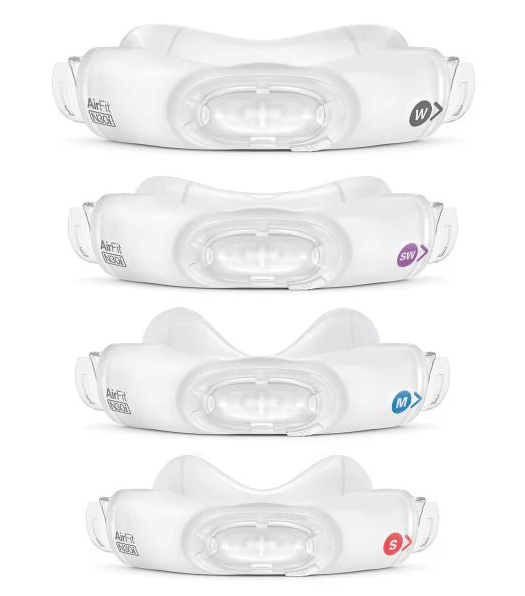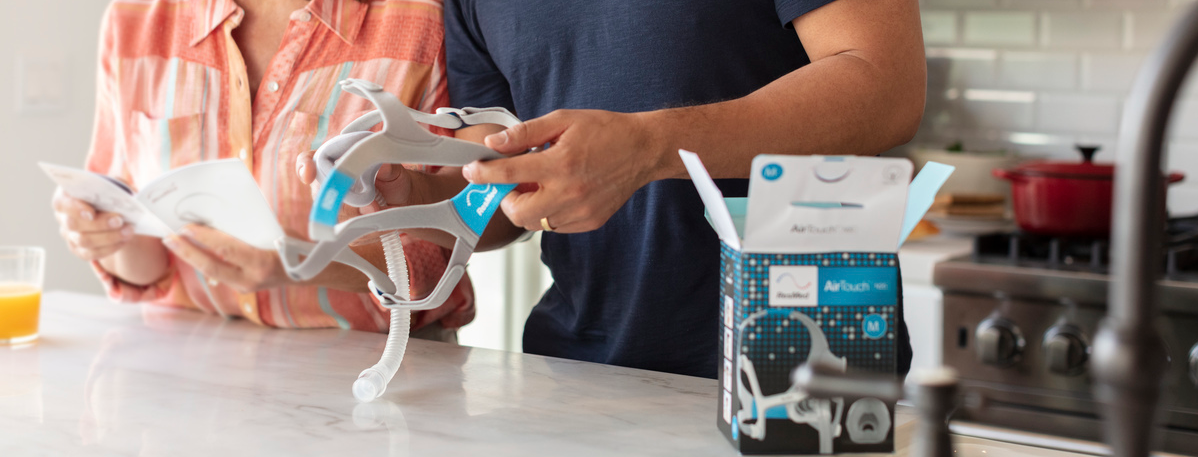How Does a CPAP Machine Work? Everything You Need to Know
If you or someone you care about has been diagnosed with obstructive sleep apnea (OSA), you've probably heard about CPAP therapy. But what exactly does a CPAP machine do—and how does it help you sleep better?
This guide covers everything you need to know: how CPAP machines work, what they’re used for, how to get started, and what makes each type of PAP therapy unique.
What Is a CPAP Machine?

A CPAP machine (short for Continuous Positive Airway Pressure) is a medical device that delivers a steady stream of pressurized air through a hose and mask. This air keeps your upper airway open while you sleep, preventing it from collapsing or becoming blocked.
Originally developed in the 1980s, CPAP therapy has become the gold standard for treating OSA and is known for being non-invasive, highly effective, and relatively simple to use.
A prescription is required to purchase a CPAP machine. Your prescription will include the pressure setting recommended based on your sleep study results.
Why Is CPAP Therapy Necessary?
People with obstructive sleep apnea experience repeated interruptions in breathing throughout the night due to relaxed throat muscles that block airflow. These events—called apneas—can happen hundreds of times per night, reducing oxygen levels in the blood and forcing the brain to repeatedly wake the body to resume breathing.
If left untreated, OSA can lead to:
- High blood pressure
- Heart disease or stroke
- Type 2 diabetes
- Chronic fatigue and irritability
- Poor concentration and memory
- Increased risk of accidents due to drowsy driving
Using a CPAP machine each night keeps your airway open and stable, helping you breathe normally and sleep more deeply.
How Does a CPAP Machine Work?

A CPAP machine draws in room air, filters it, and pressurizes it to a level that’s been prescribed based on your sleep study results. This pressurized air is then delivered through a hose to a mask that covers your nose, mouth, or both.
The gentle airflow acts like a pneumatic splint, holding your airway open to prevent obstructions. As you inhale, the air pressure prevents throat tissues from collapsing. As you exhale, the air escapes through one-way vents in the mask.
Most machines also include a heated humidifier to add moisture to the air, helping to reduce dryness in the nose, mouth, or throat.
CPAP machines typically have a lifespan of about five years. Over time, the motor in a CPAP machine can wear out, and most devices will eventually reach the end of their usable life—typically around five years. Many machines will display a pop-up message or alert when it's time for replacement.
It’s also recommended to have a follow-up sleep study every five years to ensure your pressure settings are still appropriate, as your needs may change over time.
Components of a CPAP Machine
Although compact, a CPAP machine is made up of several parts that all play a role in delivering effective therapy:
- Motor and Filter: The motor pulls in air and increases its pressure to the prescribed setting. A built-in filter removes dust, allergens, and other impurities.
- Humidification Chamber: This optional chamber adds moisture to the airflow. It's particularly useful for people living in dry climates or experiencing dryness during therapy.
- Tubing: A lightweight hose, usually about six feet long, connects the machine to the mask. Some versions offer heated tubing to maintain air warmth and reduce condensation.
- Mask: Masks come in different styles and sizes, including nasal masks, full-face masks, and nasal pillows. A well-fitting mask is essential for comfort and leak-free performance.
Types of CPAP and PAP Devices
While standard CPAP machines deliver a single fixed pressure, other types of PAP (Positive Airway Pressure) devices are available to meet different breathing needs and sleep apnea types. Here are the four main types:
-
CPAP (Continuous Positive Airway Pressure)
This is the most common PAP device. It delivers a constant, fixed level of air pressure all night long. It's ideal for patients who respond well to a single pressure and is often the starting point for therapy. -
APAP (Auto-Adjusting Positive Airway Pressure)
APAP machines automatically adjust pressure on a breath-by-breath basis. They respond to changes in your breathing patterns, body position, or sleep stage—providing more support when needed and reducing pressure when it's not. This can improve comfort and therapy compliance. -
BiPAP (Bi-level Positive Airway Pressure)
BiPAP devices offer two pressure levels: one for inhalation (IPAP) and a lower one for exhalation (EPAP). This dual setting makes it easier to exhale and is useful for people who find fixed pressure uncomfortable or have more complex breathing disorders. -
ASV (Adaptive Servo-Ventilation)
ASV machines are designed for central sleep apnea or complex sleep apnea syndrome. These advanced devices monitor your breathing pattern in real time and adjust both pressure and breath timing accordingly. If you stop breathing, the machine delivers a breath to restore rhythm and oxygen flow.
What Does a CPAP Machine Treat?

CPAP therapy is primarily used to treat obstructive sleep apnea, but it can also be prescribed for:
- Central sleep apnea
- Complex sleep apnea
- Certain chronic respiratory conditions
- Preterm infants in neonatal care with underdeveloped lungs
Its primary role is to prevent airway collapse, improve breathing, and restore restful sleep.
Benefits of CPAP Therapy
Using your CPAP machine regularly can dramatically improve both your nighttime sleep and daytime energy. Benefits include:
Short-Term Benefits:
- Deeper, more restful sleep
- Reduced or eliminated snoring
- Better mood and alertness during the day
- Fewer headaches and less brain fog
Long-Term Benefits:
- Lower blood pressure
- Decreased risk of heart attack, stroke, and arrhythmias
- Improved insulin sensitivity (important for diabetics)
- Enhanced memory, concentration, and decision-making
- Improved quality of life for both users and their partners
Getting Started with CPAP: How to Use It
If you're starting CPAP therapy, here’s what to expect:
- Get a sleep study (often a titration study) to determine your optimal pressure setting.
- Choose a machine based on your needs—CPAP, APAP, BiPAP, or ASV.
- Pick a mask that fits comfortably and seals properly. Trying different styles may be necessary.
- Use it nightly, even during naps or when traveling.
- Adjust settings as needed. Many machines have a ramp feature that starts at a lower pressure to ease you into sleep.
- Clean your equipment daily, and replace filters, tubing, and masks as recommended.
Tip: If you're experiencing discomfort, noise, or leaks, check your filter, mask seal, or consult your provider for adjustments.
Common Side Effects and How to Manage Them
CPAP therapy is safe and effective, but some users may experience mild side effects, especially during the adjustment period:
- Dry mouth or nose
- Congestion or nasal drip
- Mask irritation or redness
- Difficulty exhaling against pressure
Most of these issues can be resolved with simple tweaks like using a heated humidifier, trying a different mask, or enabling comfort features like ramp or pressure relief. Don’t hesitate to contact us or your healthcare provider for support—we want you to succeed with your therapy.
Latest Innovations in CPAP Technology
Modern CPAP machines are smarter, quieter, and more comfortable than ever. Some of the newest features include:
- Quieter motors for peaceful sleep
- Wireless data tracking and smartphone apps to monitor your therapy
- Remote compliance reporting for physicians
- Lightweight, travel-friendly models
- Improved mask designs with minimal facial contact
These upgrades make it easier to stick with therapy long-term.
Conclusion
CPAP machines play a vital role in managing obstructive sleep apnea and improving overall health. While it may take some time to adjust, the benefits of using your machine consistently are undeniable—from better sleep and energy to reduced health risks.
If you’re just getting started, be patient, ask questions, and don’t be afraid to try different mask styles or settings. The right combination will make a world of difference.
Stick with it—because great sleep is worth it.




